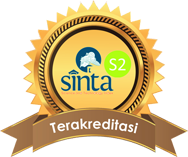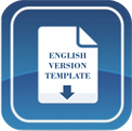Students Learning Outcomes and Internalization Islamic Values in Buffer Solution Concept through Online Learning
DOI:
https://doi.org/10.15575/jtk.v6i1.12642Keywords:
buffer solution, concept mastery, online learning, Islamic valuesAbstract
This study analyses students learning outcomes and internalization of Islamic values in buffer solutions through online learning during the Covid-19 pandemic. The study was conducted to find effective strategies in achieving students’ competence and Islamic values. This research is a quasi-experimental study conducted on 100 tenth-grade students using The One Group Pretest-Posttest model. The results showed students learning outcomes obtain an N-Gain value of 0.72 (high category). The internalization of Islamic values for three aspects: praying, blessing, and study hard determined the average above 3 (often do). Thus, the research concludes that online learning conducted on buffer materials is effective in mastering the content and internalization of Islamic values. Â
References
Allo, M. D. G. (2020). Is the online learning good in the midst of Covid-19 pandemic? The case of EFL learners. Jurnal Sinestesis, 10(1), 1-11. Retrieved from https://sinestesia.pustaka.my.id/journal/article/view/24
Amalina, N. S., Wardani, S., & Wijayati, N. (2018). Pembelajaran guided inquiry berbantuan lembar kerja siswa untuk meningkatkan hasil belajar siswa. JTK: Jurnal Tadris Kimiya, 3(1), 1-10. https://doi.org/10.15575/jtk.v3i1.2254
Arifa, F. N. (2020). Tantangan Pelaksanaan Kebijakan Belajar dari rumah dalam masa darurat Covid-19. Info Singkat: Kajian Singkat terhadap Isu Aktual dan Strategis, 12(7), 13-18. Retrieved from http://berkas.dpr.go.id/puslit/files/info_singkat/Info%20Singkat-XII-7-I-P3DI-April-2020-1953.pdf
Arnas, E. A. J. (2012). Pengaruh penggunaan laboratorium virtual dan laboratorium real terhadap sikap ilmiah dan hasil belajar kimia siswa SMA pada pokok bahasan larutan penyangga. Thesis, Program Pascasarjana: Universitas Negeri Medan.
Atiqoh, N. & Prasetyo, Z. K. (2018). The effect of picture storybook based on scientific approach through inquiry method toward student’s inference skill. Journal of Turkish Science Education, 15, 22-32. Retrieved from https://tused.org/index.php/tused/article/view/685/587
Bao, W. (2020). Covidâ€19 and online teaching in higher education: A case study of Peking University. Human Behavior and Emerging Technologies, 2(2), 113-115. https://doi.org/10.1002/hbe2.191
Basilaia, G., & Kvavadze, D. (2020). Transition to online education in schools during a SARS-CoV-2 Coronavirus (Covid-19) Pandemic in Georgia. Pedagogical Research, 5(4), 1-9. Retrieved from https://eric.ed.gov/?id=EJ1263561
Bayham, J., & Fenichel, E. P. (2020). Impact of school closures for Covid-19 on the US health-care workforce and net mortality: a modelling study. The Lancet Public Health, 5(5), 271-278. https://doi.org/10.1016/S2468-2667(20)30082-7.
Cahyana, U., Paristiowati, M., Pratiwi, W. E., & Zahari, P. A. (2019). Development of mobile game base learning on buffer solution to improve student performance. Journal of Physics: Conference Series, 1402(5), 055063. https://doi.org/10.1088/1742-6596/1402/5/055063
Darling-Hammond, L., Flook, L., Cook-Harvey, C., Barron, B., & Osher, D. (2020). Implications for educational practice of thescience of learning and development. Applied Developmental Science, 24(2), 97-140. https://doi.org/10.1080/10888691.2018.1537791
Dewi, N. R., Magfiroh, L., Nurkhalisa, & Dwijayanti, I. (2019). The development of contextual-based science digital storytelling teaching materials to improve students’ critical thinking on classification theme. Journal of Turkish Science Education, 16(3), 364-378. Retrieved from http://www.tused.org/index.php/tused/article/view/80
Drastisianti, A., Susilaningsih, E., Wijayati, N., Nada, E. I., & Alawiyah, N. (2019). Analysis of student concept understanding on the material of buffer solution using three-tier test assisted by multiple representation teaching materials. Journal of Physics: Conference Series, 1321(2), 022050. https://doi.org/10.1088/1742-6596/1321/2/022050
Esposito, S., & Principi, N. (2020). School closure during the coronavirus disease 2019 (Covid-19) pandemic: An effective intervention at the global level? JAMA pediatrics, 174(10), 921-922. https://doi.org/10.1001/jamapediatrics.2020.1892
Firmansyah, R. A. & Khumaidah, U. (2017). Kualitas keterampilan proses sains siswa yang terbiasa teacher-centered learning melalui process oriented guided inquiry learning. JTK: Jurnal Tadris Kimiya, 2(2), 130-144. https://doi.org/10.15575/jtk.v2i2.1878
Hastjarjo, T. D. (2019). Rancangan eksperimen-kuasi. Buletin Psikologi, 27(2), 187-203. https://doi.org/10.22146/buletinpsikologi.38619
Hiatt, M. A. (2016). An Assessment of the effects of spiritual and relational teaching on student learning. Provo: Brigham Young University.
Imaduddin, M. (2019). Infusing islamic values and sustainable development into chemistry for pre-service islamic elementary school teachers. Jurnal Pendidikan Sains, 7(1), 47-54. https://doi.org/10.26714/jps.7.1.2019.47-54
International Baccalaureate. (2020). Online learning, teaching and education continuity planning for schools. Wales: International Baccalaureate Organization.
Januarti, R., Asrori, A., & Jamiah, Y. (2017). Implementasi penilaian sikap spiritual dalam pembelajaran tematik di kelas IV Sekolah Dasar Islam Al-Azhar 21. Jurnal Pendidikan dan Pembelajaran Khatulistiwa, 6(12). Retrieved from https://jurnal.untan.ac.id/index.php/jpdpb/article/view/23196
Johan, H., Suhandni, A., Wulan, A.R., & Sipriyadi. (2017). Grid Analysis Display System (GrADS) and multi modus visualization in earth science learning mastery and spiritual aspect to enhance concept. Journal of Turkish Science Education, 15(1), 109-127. Retrieved from http://www.tused.org/index.php/tused/article/view/152
Kemendikbud. (2014). Panduan penilaian pencapaian kompetensi peserta didik sekolah menengah pertama. Jakarta: Kementrian Pendidikan dan Kebudayaan.
Kuswana, D., Qomarruzzaman, B., & Mahatma, M. (2020). Agama dan wabah (tanggapan ulama Jawa Barat atas Covid-19 Tahun 2020). Bandung: UIN Sunan Gunung Djati.
Narine, L. & Meier, C. (2020). Responding in a time of crisis: assessing extension efforts during Covid-19. Advancements in Agricultural Development, 1(2), 12-23. https://doi.org/10.37433/aad.v1i2.35
Nasir, M., Mulyono, Y., & Nastiti, L. R. (2020). Reconstructing distinction pattern of science education curriculum in Indonesian Islamic universities: An integrated paradigm for science and religion. Journal of Turkish Science Education, 17(1), 11-21. Retrieved from https://eric.ed.gov/?id=EJ1264727
Pitasari, R. & Yunaningsih, A. (2016). Peningkatan keterampilan generik sains siswa melalui task based learning pada larutan buffer. JTK: Jurnal Tadris Kimiya, 1(1), 1-7. https://doi.org/10.15575/jta.v1i1.1161
Purwanto, A., Pramono, R., Asbari, M., Hyun, C. C., Wijayanti, L. M., & Putri, R. S. (2020). Studi eksploratif dampak pandemi Covid-19 terhadap proses pembelajaran online di sekolah dasar. EduPsyCouns: Journal of Education, Psychology and Counseling, 2(1), 1-12. Retrieved from https://ummaspul.e-journal.id/Edupsycouns/article/view/397
Saebani, B. A. (2020). Kesadaran teologis keberagamaan umat manusia menghadapi wabah Covid-19. Bandung: UIN Sunan Gunung Djati.
Saidah, K. & Damariswara, R. (2017). Analisis bentuk bentuk penilaian sikap siswa sekolah dasar di Kota Kediri. Profesi Pendidikan Dasar, 4(1), 84-96. Retrieved from http://journals.ums.ac.id/index.php/ppd/article/view/4244
Sandars, J., et al. (2020). Twelve tips for rapidly migrating to online learningduring the Covid-19 pandemic. MedEdPublish, 9(1), 82. https://doi.org/10.15694/mep.2020.000082.1.
Sari, S. A. & Ulya, A. (2017). The development of pop-up book on the role of buffer in the living body. European Journal of Social Sciences Education and Research, 4(4), 213-221. Retrieved from https://journals.euser.org/index.php/ejser/article/view/2430
Shadish, W. R., Cook, T. D., & Campbell, D. T. (2002). Experimental and quasi-experimental designs for generalized causal inference. Boston: Houghton Mifflin Co.
Setiadi, I., & Irhasyuarna, Y. (2017). Improvement of model student learning through the content of solutions guided discovery buffer. IOSR Journal of Research & Method in Education (IOSR-JRME), 7(1), 01-09. https://doi.org/10.9790/7388-0701050109
Siregar, H. S., Sugilar, H., Ukit, & Hambali, H. (2020). Merekonstruksi alam dalam kajian sains dan agama: studi kasus pada masa pembatasan sosial berskala besar (PSBB) dampak covid-19. Bandung: UIN Sunan Gunung Djati.
Subrahmanyam, K., Frison, E., & Michikyan, M. (2020). The relation between face-to-face and digital interactions and self-esteem: A daily diary study. Hum Behav & Emerg Tech, 2, 116–127. https://doi.org/10.1002/hbe2.187
Sulastri, Rusman, & Arifa, A. (2018). Pengembangan soal-soal kimia bermuatan nilai-nilai untuk memperkokoh karakter siswa SMA. JTK: Jurnal Tadris Kimiya, 3(2), 171-181. https://doi.org/10.15575/jtk.v3i2.3512
Thayer-Bacon, B. J. (2016). Teaching spirituality as ontology in public schools. Democracy & Education, 25(1), 1-5. Retrieved from https://democracyeducationjournal.org/home/vol25/iss1/13/
The World Bank Education Global Practice. (2020). Guidance Note: Remote Learning & Covid-19. (https://www.worldbank.org/en/topic/edutech#Covidedtech), accessed 5th May 2020.
Treagust, D. F., & Chittleborough, G. (2001). Chemistry: A matter of understanding representations. In Subject-specific instructional methods and activities. Emerald Group Publishing Limited. https://doi.org/10.1016/S1479-3687(01)80029-8
UNESCO. (2020). Coronavirus impacts education. (https://en.unesco.org/themes/education-emergencies/coronavirus-school-closures), accessed 6th May 2020.
Viner, R. M., Russel, S. J., Croker, H., et al. (2020). School closure and management practices during coronavirus outbreaks including Covid-19: A rapid systematic review. Lancet Child Adolesc Health, 4, 397–404. https://doi.org/10.1016/S2352-4642(20)30095-X
Wiguna, A. (2017). Upaya mengembangkan sikap spiritual dan sosial peserta didik berbasis psikologi positif di sekolah. Al-ASASIYYA: Journal Of Basic Education, 1(2), 47-61. https://doi.org/10.24269/ajbe.v1i2.684
Yang, J. C., & Lin, Y. L. (2010). Development and evaluation of an interactive mobile learning environment with shared display groupware. Educational Technology & Society, 13(1), 195–207. Retrieved from https://www.jstor.org/stable/pdf/jeductechsoci.13.1.195.pdf
Yani, F. H., Mawardi, W., & Rusiani, A. F. (2019). The effectiveness of using student worksheet based on guided inquiry toward the student learning outcames in buffer solution material. International Journal of Progressive Sciences and Technologies (IJPSAT), 15(2), 58-62. http://doi.org/10.52155/ijpsat.v15.2.1047
Zhang, W., Wang, Y., Yang, L., & Wang, C. (2020). Suspending classes without stopping learning: China’s education emergency management policy in the Covid-19 outbreak. Journal of Risk and Financial Management, 13(55), 1-6. https://doi.org/10.3390/jrfm13030055
Zhou, L., Li, F., Wu, S., & Zhou, M. (2020). “School’s out, but class’s onâ€, the largest online education in the world today: Taking China’s practical exploration during the Covid-19 epidemic prevention and control as an example. Best Evid Chin Edu, 4(2), 501-519. https://doi.org/10.2139/ssrn.3555520
Downloads
Published
How to Cite
Issue
Section
Citation Check
License
Authors who publish with this journal agree to the following terms:
- Authors retain copyright and grant the journal right of first publication with the work simultaneously licensed under a Creative Commons Attribution-ShareAlike that allows others to share the work with an acknowledgement of the work's authorship and initial publication in this journal.
- Authors are able to enter into separate, additional contractual arrangements for the non-exclusive distribution of the journal's published version of the work (e.g., post it to an institutional repository or publish it in a book), with an acknowledgement of its initial publication in this journal.
- Authors are permitted and encouraged to post their work online (e.g., in institutional repositories or on their website) prior to and during the submission process, as it can lead to productive exchanges, as well as earlier and greater citation of published work (See The Effect of Open Access).








